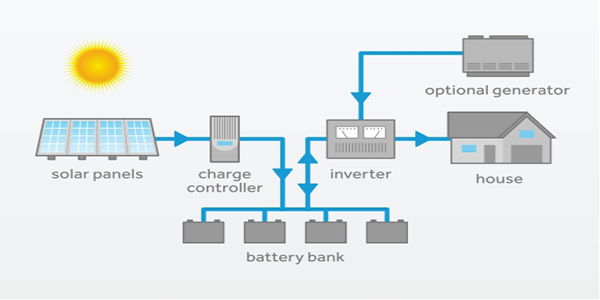
Commercial and Industrial Solar Systems: Powering Sustainable Growth
The global transition to renewable energy has accelerated in recent years, with commercial and industrial (C&I) solar
systems emerging as a cornerstone of this movement. Businesses worldwide are increasingly adopting solar energy
to reduce operational costs, enhance sustainability, and secure energy independence. This article explores the advantages
of C&I solar systems and their promising market trajectory.
Key Advantages of C&I Solar Systems
-
-
-
-
-
- Cost Savings and Financial Incentives
Solar energy offers businesses a direct path to lower electricity bills. By generating their own power, companies can offset grid consumption, particularly during peak hours when energy prices soar. Additionally, government incentives—such as tax credits, rebates, and accelerated depreciation—significantly reduce upfront costs. For example, the U.S. Investment Tax Credit (ITC) allows businesses to deduct 30% of solar installation costs from federal taxes. Over time, these savings compound, delivering a rapid return on investment (ROI), often within 5–7 years.
- Energy Independence and Price Stability
Solar systems insulate businesses from volatile fossil fuel prices and grid disruptions. With on-site generation and battery storage solutions, companies can maintain operations during power outages while locking in predictable energy costs for decades. This stability is particularly valuable for energy-intensive industries like manufacturing, where electricity expenses directly impact profitability.
- Sustainability and Corporate Responsibility
Adopting solar power aligns with global ESG (Environmental, Social, and Governance) goals. By reducing carbon footprints, businesses bolster their reputations as environmentally responsible entities—a critical factor in attracting eco-conscious customers, investors, and talent. For multinational corporations, solar adoption also supports compliance with tightening emissions regulations and net-zero commitments.
- Scalability and Technological Innovation
Modern solar solutions are highly adaptable. Rooftop arrays, solar carports, and ground-mounted systems can be customized to fit diverse site conditions. Advances in panel efficiency (exceeding 22% for premium models), smart inverters, and AI-driven energy management systems further optimize performance. Pairing solar with storage or microgrids enables businesses to maximize self-consumption and even sell surplus energy back to the grid.

Market Outlook: A Bright Future
The C&I solar market is poised for robust growth. According to BloombergNEF, global installations are projected to expand at a CAGR of 8% through 2030, driven by declining technology costs and rising demand for clean energy. Key trends shaping the sector include:
- Corporate Renewable Procurement
Companies like Amazon, Walmart, and Apple are leading the charge, procuring gigawatts of solar capacity to power operations. Power Purchase Agreements (PPAs) and leasing models—which require minimal upfront investment—are democratizing access for small and medium enterprises.
- Policy Support and Decarbonization Mandates
Governments worldwide are enacting policies to accelerate solar adoption. The EU’s REPowerEU plan, India’s Production-Linked Incentive (PLI) scheme, and China’s 14th Five-Year Renewable Energy Plan all prioritize C&I solar deployment. Meanwhile, carbon pricing mechanisms are making fossil fuels less economically viable.
- Emerging Markets and Hybrid Solutions
Regions with high solar irradiance and rising industrialization—such as Southeast Asia, Latin America, and Africa—are witnessing surging demand. Hybrid systems integrating solar with wind or hydrogen are also gaining traction, offering round-the-clock renewable energy.
Conclusion
Commercial and industrial solar systems are no longer a niche solution but a strategic imperative for forward-thinking businesses. By delivering financial, operational, and environmental benefits, solar energy is reshaping how industries power their growth. As technology advances and global decarbonization efforts intensify, the C&I solar sector is set to play a pivotal role in building a sustainable, resilient energy future. For businesses, the question is not whether to adopt solar, but how soon they can reap its rewards.


 IPv6 network supported
IPv6 network supported